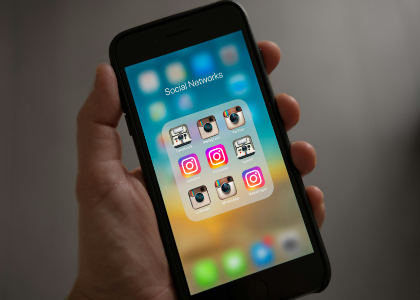Blog

10 Popular Misconceptions About Logo Design
There are numerous misconceptions that some businesspeople, especially newcomers, mistakenly believe to be unchangeable truths. We'll discuss how to avoid mistakes and the most prevalent myths when designing logos below.
Even for businesses with significant expenditures, some of them are relevant. However, if you want to become a sensible businessman and manage your finances sensibly, this article might be able to assist you to optimize your budget.
Misconception 1. The logo needs to appear classy and premium
Everyone wants to be the best; a good product, helpful service, and clear website design are all factors that improve success possibilities.
But is it worthwhile to squander all the materials in order to produce another graphic design masterpiece of the finest quality?
Don't jump to conclusions. Maybe you're in need of a logo that will do wonders for your company, help you stand out from the competition, look fantastic, and won't break the bank.
The success of a logo depends less on how pricey the design is and more on how well it was made.
For instance, a student at Portland University named Carolyn Davidson created a logo for an unnamed company in 1971 for a modest cost of $35. It was a Nike-branded business.
Was spending crazy money at the time to create the Nike logo worth it? No. Does it work efficiently? Yes.
There are a lot of cases like this. Let's have a look at how much it costs to design the logos of well-known companies.
The Coca-Cola logo was created for free; Nike paid $35; Twitter paid $15; nevertheless, the Pepsi logo cost $1 million and BP's rebranding cost $221 million. All logos are profitable in their respective fields despite varying costs.
Misconception 2. Success is only possible with quality design
Design is important, no doubt. For instance, 80% of small business owners believe that a company's success depends on how well-designed its logo, website, and other corporate identity components are. Only 3% of respondents disagree with the importance of design.
But in a tight competition, is it worthwhile to rely solely on high-quality design? The possible answer is no. It is merely one instrument. The long-term success of your business depends on your products, marketing, innovation, etc., even if you succeed in attracting customers.
According to Sagi Haviv, a logo is a straightforward and practical symbol that people may use to find and recognize your brand. However, a logo needs to be supported by a reputable and well-known company in order to be successful. A logo by itself won't guarantee a business' success.
As sad as it may sound, many businesses do not even "bother" to create a logo.
According to TJ McCue, around 50% of owners of small businesses do not have a website, Facebook page, or LinkedIn presence. However, many people build successful businesses using word-of-mouth advertising and without having an online presence. A few of them use text-based logos made by services like Flamingtext. Of course, they'll replace their logo eventually when they're embarrassed to look at it.
However, take the first two options if you must choose between enhancing the service, turning a profit, or protecting your logo.
Misconception 3. I want the most trending logo design
You truly want to develop a logo that will ride the wave of the newest design trends when you read the upcoming article about logo design trends for 201X.
Nevertheless, as David Airey noted in his book "Logo design love. A guide to creating iconic brand identities" it's preferable to leave fashion industry trends to those designing logos and other business identities.
You definitely don't want to spend a lot of effort and money on a design that will quickly become out-of-date because trends come and go.
The logo should be as durable as the company it symbolizes, and longevity is of the utmost importance. The fundamental idea may occasionally be revised to clarify some details, but this must never be compromised.
Misconception 4. My logo must be on par with that of Starbucks or Apple
Although it is an admirable goal, it is unlikely that you will be able to duplicate the achievements of well-known businesses. Additionally, it's not a good idea to use someone else's idea as your own. To attract the attention of customers, you need to stand out, not repeat someone else's ideas.
Therefore, designers from a trusted website to pay for an essay online admits that it is much more beneficial to examine the factors that contributed to the success of well-known company logos and follow their lead. For instance, the Nike logo is a great example of a strong, recognizable design that works even without color, and Coca-Cola's logo hasn't changed since 1987.
Misconception 5. Everyone ought to be able to tell what I do just by looking at my logo
One of the most widespread misconceptions about designing a logo is this.
The majority of small businesses use tired visual clichés to develop logos that directly represent the goods they sell.
So how will your company differentiate itself from the competitors if everyone else is using the same concept?
The company's mission need not be figuratively represented in the logo. For instance, the Audi logo is not even remotely an automobile. The Hawaiian Airlines logo also does not depict an aircraft.
Misconception 6. Like FedEx, I must have a secret message in my logo
Yes, making your logo more recognizable and different from the competitors is a fantastic idea. But be honest—did your opinion of FedEx change once you discovered that an arrow was hidden between the letters E and X?
Have you increased your Amazon purchases since you discovered the secret smile line?
Not likely. Because customers do not place importance on that. Service, reasonable costs, and product quality are important to them. They will be willing to support a business with a possibly uncool logo in exchange for that.
We're not saying that your logo shouldn't contain any hidden details. However, don't emphasize it if you don't know how to do it succinctly and effectively. One can always update the logo and include it in an advertising campaign.
Misconception 7. The clients will also enjoy the logo if the team does
The logo wasn't made for you, your friends, or your coworkers; it was made for your customers. You must comprehend who and what your clients are seeking.
To do this, list the company characteristics you wish to convey to your audience and work to design a logo that can do so.
Misconception 8. First logo, then sales and branding
What do a lot of prospective business owners do when they start a startup? Yes, they design or purchase a logo and business identity. However, they put a lot of time and money into it.
A logo demands a lot of creativity and resources to create. Save your time and resources for product development while you're trying to begin a business.
So perhaps in the early phases of business development, you should give your attention more to your products and sales.
However, this does not imply that you must use a bad-quality logo or that you shouldn't. There are numerous ways to design a quality logo on a tight budget.
Misconception 9. Only one aspect of the business needs to be produced, and that is the logo
Many individuals underestimate the value of a logo and view it as merely a graphic to be made and used everywhere possible, such as on a website, social media platform, business card, etc. being superior to everyone else.
The issue is that, while you shouldn't rely entirely on it, you must consider the logo as a tool for making money.
If your goods are of high quality, your prices are fair, and your marketing and business skills are on par with those of your competitors, a nice logo can help you stand out from the competitors and draw in more clients.
In the grocery store, for example, you can pick between two milk packages: one with the logo and one without. Which package are you selecting? You are more likely to purchase milk with the logo on it when all other factors are the same (price, volume, and fat content are the same). The face of the business may be seen in the logo, which is also a mark of quality. Compared to packaging without a logo, packaging with one inspires more trust.
Misconception 10. If I don’t understand the design, the designer himself will be able to come up with everything right
Graphic design includes the creation of logos. But that does not imply that if you have no design experience, a professional will do all the legwork and produce a useful logo for you.
The values of your business and the traits of the niche as a whole must be understood by you as the business owner. You ought to be actively involved in logo design as a result. A professional designer will always ask you a few questions to find out as much as they can about your company, industry, and competitors. You should also share as much as you can about your business vision and company values.
The designer will only be able to translate the logo into graphics after he is aware of who the logo is intended for, who it should appeal to, and what information needs to be expressed. Naturally, you don't have to be in close proximity to the designer all the time. Drafting terms of reference should involve constructive discussion. You should explain everything and provide the most details about yourself at this point. After that, work on clarifications and editing begins.
You'll acquire a good logo that will serve you well in this way.
More tips and tricks on the blog


